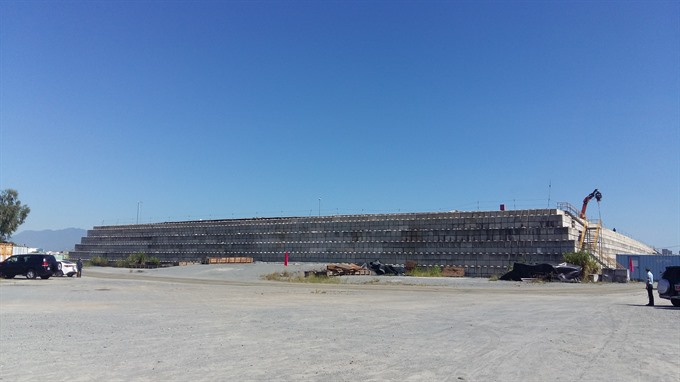90,000m3 of dioxin-contaminated soil and sediment treated
From 1 April 2011 until now, around 90,000m3 of dioxin-contaminated soil and sediment at the Da Nang International Airport have been effectively treated, whilst about 50,000m3 of dioxin-contaminated soil and sediment have been safely isolated.
 |
| An In-Pile Thermal Desorption (IPTD) system was used to destroy dioxin in contaminated soil and sediment at Da Nang Airport Project. (Photo: VNS) |
To date, a total of 32.4ha of already-treated land have been handed over to the city for the expansion of the airport.
The above-mentioned information was released by a spokesperson for the National Steering Committee on the Settlement of Post-war Unexploded Ordnance and Toxic Chemical Consequences, or Committee 701, under the Ministry of National Defence, at an international workshop in Da Nang on Tuesday to present the result of collaboration between Viet Nam and the USA in implementing the project to remove dioxin contamination at the Da Nang Airport.
The project has minimised exposure risk to humans and the environment at the airport, and brought dioxin to the lowest level. As a result, the airport has already been removed from Viet Nam’s list of dioxin contaminated hotspots.
The project’s success made local residents feel secure, and demonstrated the bilateral effective cooperation between Viet Nam and the USA in solving the consequences of the war.
The ‘Removal of Dioxin Contamination at Da Nang International Airport’ project was approved by the Vietnamese Ministry of Defence on 1 April 2011, and it has been implemented by the Air Defence-Air Force in coordination with USAID.
The project’s investment capital includes 60 billion VND, equivalent to 2.5 million USD, from the Vietnamese Government, and about 110 million USD from the USA’s non-refundable aid.
The project is expected to be implemented during the 2011 – 2019 period, with a focus on clearing all bombs and mines, building transformer and environment monitoring stations, treating around 150,000m3 of dioxin-contaminated soil and sediment, and burying 60,000m3 of dioxin-contaminated soil and sediment on a total area of 37.4ha.